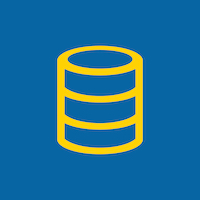
ICMLA 2014 Accepted Papers Data Set
Donated on 2/18/2018
This data set compromises the metadata for the 2014 ICMLA conference's accepted papers, including ID, paper titles, author's keywords, abstracts and sessions in which they were exposed.
Dataset Characteristics
Multivariate
Subject Area
Other
Associated Tasks
Classification, Clustering
Feature Type
-
# Instances
105
# Features
-
Dataset Information
Additional Information
CSV format where each row is a paper and each column an attribute.
Has Missing Values?
No
Variables Table
| Variable Name | Role | Type | Description | Units | Missing Values |
|---|---|---|---|---|---|
| no | |||||
| no | |||||
| no | |||||
| no | |||||
| no |
0 to 5 of 5
Additional Variable Information
Paper_Id: Number; identifier of the paper Paper_Title: Free text; title of the paper Author_Keywords: Free text; author-generated keywords Abstract: Free text; paper abstracts Session: Categorical; conference organizer's-selected, conference session in which the paper was presented
Dataset Files
| File | Size |
|---|---|
| ICMLA_2014.csv | 122.5 KB |
pip install ucimlrepo
from ucimlrepo import fetch_ucirepo # fetch dataset icmla_2014_accepted_papers_data_set = fetch_ucirepo(id=434) # data (as pandas dataframes) X = icmla_2014_accepted_papers_data_set.data.features y = icmla_2014_accepted_papers_data_set.data.targets # metadata print(icmla_2014_accepted_papers_data_set.metadata) # variable information print(icmla_2014_accepted_papers_data_set.variables)
Vallejo-Huanga, D. (2017). ICMLA 2014 Accepted Papers Data Set [Dataset]. UCI Machine Learning Repository. https://doi.org/10.24432/C5XK6D.
Creators
Diego Vallejo-Huanga
DOI
License
This dataset is licensed under a Creative Commons Attribution 4.0 International (CC BY 4.0) license.
This allows for the sharing and adaptation of the datasets for any purpose, provided that the appropriate credit is given.